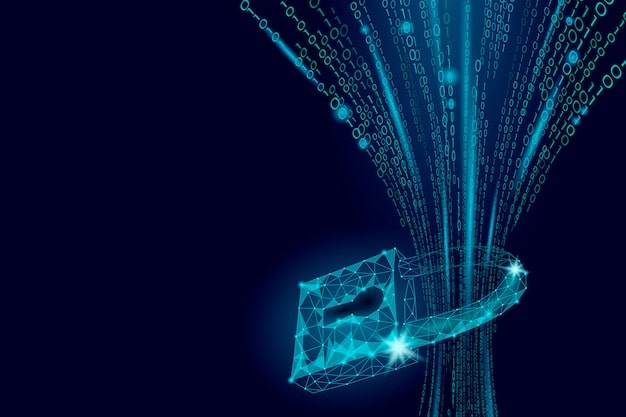Automotive Cybersecurity: Emerging Trends & US Car Owner Impact

Emerging trends in automotive cybersecurity, such as AI-powered threat detection, blockchain for secure data sharing, and enhanced encryption, profoundly impact US car owners by offering increased protection against cyberattacks, but also introduce complexities in vehicle maintenance and data privacy.
The automotive industry is undergoing a massive transformation, driven by connectivity and automation. However, this technological revolution brings significant cybersecurity challenges. Let’s explore the emerging trends in automotive cybersecurity and their implications for US car owners.
Understanding the Growing Threat Landscape in Automotive Cybersecurity
As cars become more connected, the attack surface expands. Understanding the evolving threats is crucial for manufacturers and car owners. Let’s have a look at how exactly the threat landscape is evolving.
Increased Connectivity and Attack Vectors
Modern vehicles are essentially computers on wheels. They integrate various systems like infotainment, engine control, and safety features, all connected through a network. This expanded connectivity introduces new attack vectors, making cars vulnerable to remote hacks.
Common Cybersecurity Threats Targeting Vehicles
- Malware Infections: Automotive systems can be infected with malware, disrupting vehicle functionality or stealing sensitive data.
- Remote Access: Hackers can remotely access and control vehicle systems, potentially leading to dangerous situations.
- Denial of Service (DoS) Attacks: Overloading the vehicle’s network can lead to system failures and loss of control.
- Data Theft: Personal data, such as location history and driving habits, can be stolen and misused.
The integration of advanced technologies like 5G and vehicle-to-everything (V2X) communication further amplifies these risks. Protecting against these threats requires a comprehensive approach incorporating robust security measures and continuous monitoring.

Key Emerging Cybersecurity Trends in the Automotive Industry
Several innovative approaches are being developed to combat the rising cybersecurity challenges. Staying informed about these trends is vital for protecting vehicles against cyber threats. let’s see what exactly is going on in the sector.
Artificial Intelligence (AI) and Machine Learning (ML)
AI and ML are playing a transformative role in threat detection and response. These technologies can analyze vast amounts of data to identify anomalies and predict potential attacks before they occur. AI-powered systems can also automate security updates and quickly adapt to new threat patterns.
Blockchain Technology for Secure Data Sharing
Blockchain provides a decentralized and secure way to manage data sharing between vehicles, manufacturers, and service providers. By ensuring data integrity and preventing tampering, blockchain helps create a more trustworthy and transparent automotive ecosystem. This is especially useful in managing software updates and tracking vehicle history.
Enhanced Encryption and Authentication Methods
Advanced encryption techniques are crucial for protecting sensitive data transmitted between vehicle components and external networks. Stronger authentication methods, such as multi-factor authentication and biometric verification, can prevent unauthorized access to vehicle systems. These authentication methods are becoming increasingly sophisticated, providing enhanced security against cyberattacks.
These emerging trends highlight the industry’s commitment to staying ahead of cyber threats and building more secure vehicles.
The Implications for US Car Owners
These cybersecurity advancements have significant implications for US car owners, affecting vehicle safety, data privacy, and overall ownership experience. It’s important to understand these implications to make informed decisions.
Increased Vehicle Safety
Robust cybersecurity measures can prevent hackers from remotely controlling vehicle systems, enhancing the safety of drivers and passengers. By protecting against malware and unauthorized access, these measures reduce the risk of accidents caused by cyberattacks.
Protecting Personal Data and Privacy
Enhanced encryption and secure data sharing practices help protect personal data, such as location history and driving behavior. Car owners can have greater confidence that their data is not being misused or stolen. GDPR might be a good point of reference for US data regulations.
The Role of Over-the-Air (OTA) Updates
OTA updates enable manufacturers to quickly deploy security patches and software enhancements, keeping vehicles protected against the latest threats. Car owners should ensure their vehicles are set to receive these updates automatically. OTA deployment requires robust management and validation processes to guarantee security and data integrity.

Navigating Automotive Cybersecurity as a US Car Owner
As a car owner, several steps can be taken to ensure vehicle are secured against cyber threats. Proactive measures can significantly reduce the risk of cyberattacks and protect personal information. Let’s see in more detail what you can do.
Best Practices for Car Owners
- Keep Software Updated: Regularly update vehicle software to patch security vulnerabilities.
- Use Strong Passwords: Protect connected apps and services with strong and unique passwords.
- Be Cautious with Third-Party Apps: Only install apps from trusted sources and review permissions carefully.
- Monitor Vehicle Security: Stay informed about potential security threats and monitor vehicle systems for suspicious activity.
Understanding Your Rights and Data Privacy
Familiarize yourself with data privacy policies and understand your rights regarding the collection and use of your personal data. Many manufacturers provide options to control data sharing settings.
The Importance of Cybersecurity Awareness
Stay informed about the latest cybersecurity threats and best practices. Cybersecurity awareness can empower car owners to take proactive steps to protect their vehicles and personal data. Participating in online forums and reading industry publications can help broaden your knowledge base.
The Future of Automotive Cybersecurity
The landscape of automotive cybersecurity is constantly evolving, requiring continuous innovation and adaptation. The future holds both challenges and opportunities for securing connected vehicles. Let’s dive into what we can expect.
Collaboration Between Automakers and Cybersecurity Experts
Increased collaboration between automakers and cybersecurity experts is essential for developing robust security solutions. Sharing threat intelligence and best practices can help the industry stay ahead of cyber threats. Collaborative initiatives also foster the development of standardized security protocols.
The Rise of Bug Bounty Programs
Bug bounty programs encourage ethical hackers to identify and report vulnerabilities in vehicle systems. These programs incentivize security researchers to help automakers improve their security posture.
The Role of Government Regulations
Government regulations and standards play a crucial role in ensuring automotive cybersecurity. These regulations can mandate minimum security requirements and promote industry-wide best practices. Compliance with regulations is essential for maintaining consumer trust and confidence in connected vehicle technology.
| Key Point | Brief Description |
|---|---|
| 🛡️ AI Threat Detection | Uses AI to identify and predict potential cyberattacks on vehicle systems. |
| 🔗 Blockchain Security | Secures data sharing between vehicles and service providers, ensuring data integrity. |
| 🔒 Enhanced Encryption | Protects sensitive data transmitted within and outside the vehicle. |
| 📡 OTA Updates | Allows manufacturers to deploy security patches and software enhancements remotely. |
Frequently Asked Questions (FAQ)
▼
Modern cars face threats like malware infections, remote access by hackers, denial of service attacks, and data theft. These threats can compromise vehicle functionality and personal privacy.
▼
AI and ML enhance cybersecurity by analyzing data to detect anomalies, predicting potential attacks, automating security updates, and quickly adapting to new threat patterns.
▼
Blockchain provides a secure and decentralized way to manage data sharing between vehicles, manufacturers, and service providers, ensuring data integrity and preventing tampering.
▼
Car owners should keep software updated, use strong passwords for connected apps, only install apps from trusted sources, and stay informed about potential security threats.
▼
OTA updates allow manufacturers to quickly deploy security patches and software enhancements, ensuring vehicles are protected against the latest threats without needing to visit a service center.
Conclusion
As automotive technology continues to evolve, so will the cybersecurity threats facing US car owners. By staying informed about emerging trends, adopting best practices, and advocating for strong security standards, we can collectively work towards a safer and more secure automotive future.





